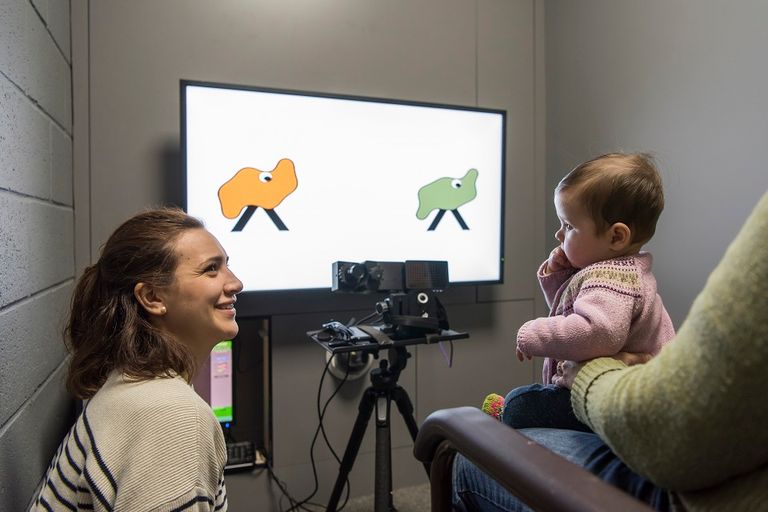Research Facilities
Infant Behaviour Observation Labs
The DDLab houses a suite of rooms designed to record children’s behaviour as they play in our experiments. This space can be set up flexibly to enable different types of observations, all recorded from cameras mounted on walls, the ceiling, or even hidden in boxes that children play with. Watch this guided tour presented by Prof Larissa Samuelson, to see how our labs are set up for infant research.

Eye-tracking and dyadic play at the Developmental Dynamics Lab
Eye tracking is a way of recording where children and parents look when participating in our research studies. Tracking where they look and what they are paying attention to helps us to understand how children learn and how parents and children interact. Sometimes, we track children’s eyes remotely using a special camera pointed at their face; other times, we have children and parents wear small glasses that track their eyes as well as a view of the world they are looking at.

Functional Near-infrared Spectroscopy (fNIRS)
fNIRS is a non-invasive method of monitoring brain function. It works by emitting infra-red light (part of our normal daylight spectrum) and picking up its reflection back from the brain. It involves wearing a cap-like hat which has small sensors placed on the head through which the light is emitted. Blood flow through the brain will affect the reflection of light back to sensors in the cap and tells us which parts of the brain are active as children participate in the study.

Magnetic Resonance Imaging (MRI)
Magnetic Resonance Imaging (MRI) is a safe and non-invasive technique used in radiology and is commonly used to study the brain in children and adults. We use MRI to give us a picture of the brain’s structure as infants and children develop. For instance, in a current study, we are measuring changes in myelin in the brain. Myelin forms around nerves in the brain, allowing electrical impulses to transmit quickly and efficiently. Our question is how the growth of myelin is related to emerging cognitive skills in early development.

